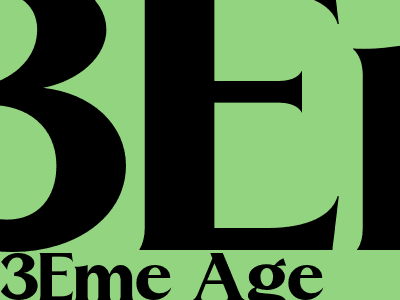The 3Eme Age: A Comprehensive Guide
What is the 3Eme Age?
The 3Eme Age is a term coined by French demographer Alfred Sauvy in 1961. It refers to the period in human history characterized by a significant increase in the number of older adults, or those over the age of 65. This demographic shift is primarily driven by declining fertility rates and increasing life expectancy.
Key Characteristics of the 3Eme Age
- Increased proportion of older adults in the population.
- Aging of the "baby boomer" generation.
- Declining fertility rates.
- Increased life expectancy.
Challenges and Opportunities of the 3Eme Age
Challenges
The 3Eme Age presents both challenges and opportunities to societies worldwide. Some of the key challenges include:
- Increased healthcare costs due to the growing number of older adults with chronic health conditions.
- Shortage of skilled workers to care for the aging population.
- Age discrimination in the workplace and other areas of society.
Opportunities
Despite the challenges, the 3Eme Age also offers several opportunities:
- Experienced and skilled labor force of older adults.
- Potential for increased innovation and creativity from older adults.
- Intergenerational knowledge transfer and mentoring opportunities.
Policy Considerations for the 3Eme Age
Governments and policymakers must address the challenges and harness the opportunities of the 3Eme Age. Key policy considerations include:
- Reforming healthcare systems to meet the needs of older adults.
- Investing in education and training programs for caregivers.
- Promoting age-friendly workplaces and policies.
- Encouraging intergenerational dialogue and cooperation.
Conclusion
The 3Eme Age is a significant demographic shift that presents both challenges and opportunities for societies worldwide. By addressing the challenges and seizing the opportunities, we can create a society that values and supports older adults while ensuring their well-being and contributions to our communities.

Komentar